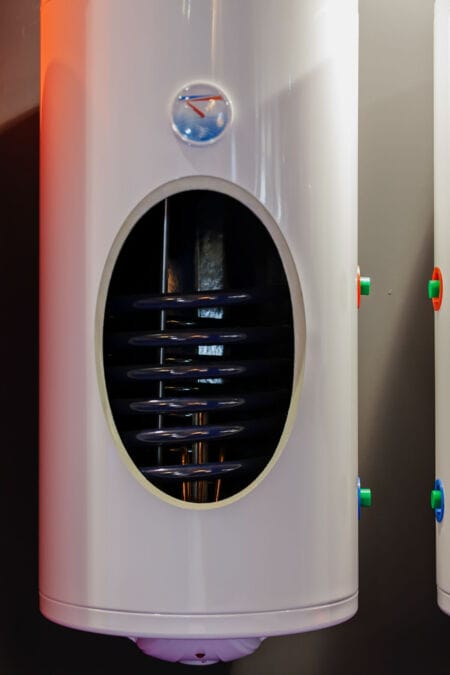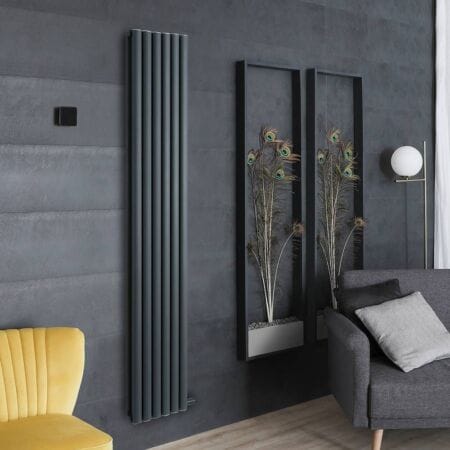Contents
ToggleWhat we'll cover...
Insights into smart radiator valves, involving how they work, when they should be used, and their benefits in comparison with standard radiator valves.
Understanding smart valves and how they work
In the ever-growing world of home automation and energy efficiency, smart radiator valves (also known as smart TRVs) are quickly becoming one of the simplest – and smartest – upgrades you can make to your home heating system.
But what exactly are they? What do they do? And all importantly, can they help you save money without sacrificing comfort?
We’ll answer all these questions and more in this article.
What is a smart radiator valve?
Put in the simplest terms, a smart radiator valve is a digital upgrade on your traditional thermostatic radiator valve (TRV). While standard TRVs enable you to manually adjust the heat output of an individual radiator, smart TRVs take it up several notches.
Smart TRVs allow you to:
- Control each radiator independently via an app or voice assistant
- Set room-by-room heating schedules
- Monitor temperatures and usage from your phone
- Automate heating based on occupancy, weather or time
So instead of heating your entire house in the same way, smart radiator valves facilitate precise, zoned heating. In turn, you can enjoy better comfort, greater flexibility, and lower energy expenditure (and bills) from the performance of your radiators.
How do smart radiator valves work?
Smart valves incorporate built-in temperature sensors and digital controls to regulate the flow of hot water through each radiator.
They connect wirelessly to your Wi-Fi or smart heating network, and integrate with your existing boiler setup, so no major overhaul is required.
Most work in tandem with a smart thermostat, but many can also operate independently, providing you with fine-tuned control over individual rooms, including:
- Bedrooms
- Spare rooms
- Home offices
- Conservatories
- Even that chilly downstairs loo
The benefits of smart TRVs
- Zoned heating
Only heat up the rooms that are in use, keeping the others ticking over at a lower temperature. Standard real-world examples include:
- Set the living room to a warm temperature in the evening
- Heat up the bathroom accordingly just before bedtime
- Switch off the heating in the unused guest room until visitors are staying over
- Energy savings
By choosing the right BTU output for your room and preventing the overheating of unused spaces, you can significantly reduce your energy consumption. Smart TRVs also allow a far more accurate level of control than manual valves, helping your system to work smarter, not harder.
- App & voice control
Simply set and forget, or you can make necessary adjustments from your phone. On the train? In the pub? Just tap onto the app and choose what temperature you want the living room heated to upon your return. Done.
- Custom schedules
Smart valves enable users to create tailored heating plans for each room based on their routine, the day of the week, or even in line with the weather forecast.
- Smarter comfort
Unlike traditional valves, many smart TRVs have features like open window detection, geofencing, and adaptive learning, so they fine-tune themselves over time for maximum heating efficiency.
Can you install smart radiator valves by yourself?
Good news: most smart radiator valves are DIY-friendly.
If you already have standard TRVs installed, switching to smart versions is typically a case of:
- Unscrewing the old head
- Screwing on the new one
- Pairing it with your smart hub or app
Some models require specific adaptors (usually supplied), and if your current valves are non-thermostatic, you may need to call a plumber for a valve body upgrade. But for many homes, it’s a quick and easy 10-minute job per radiator.
Are smart TRVs compatible with all heating systems?
Generally speaking:
- Yes to most combi boilers, system boilers, and heat-only boilers with radiators
- Yes to underfloor heating zones if paired with a compatible controller
- Yes to hybrid systems and heat pumps (with the right setup)
- No to electric radiators – unless they’re specifically designed for smart integration
Always check the manufacturer’s compatibility list before purchasing – especially if you’re using an existing smart thermostat.
How much can you save with smart radiator valves?
While savings will vary based on property size, usage habits, and insulation amongst other factors, the Energy Saving Trust suggests smart radiator valves can shave around £145 per year off your heating bills when used correctly.
That’s not just down to lower temperatures – it’s also about avoiding waste and ensuring clever heat retention. Heating only the spaces you’re using, only when you need them, is where the real magic happens.
And when paired with smart thermostats and zoned schedules, it’s entirely possible to cut costs without ever reaching for a jumper to layer up.
Extra considerations for smart TRVs
- Compatibility: Always double-check that your radiator valves are TRV-ready and your heating system is compatible with smart devices.
- Wi-Fi signal: Ensure you have a strong connection and good signal throughout your home to avoid connection dropouts, especially in loft conversions or garden offices that may be situated some way from your internet hub.
- Battery management: Most smart TRVs are powered via battery, so keep a stash of appropriate-size batteries handy, or opt for rechargeable models.
Are smart TRVs worth it?
If you want a smarter, leaner, and more responsive way to heat your home, smart TRVs are a fantastic option to help you achieve your goals.
Smart radiator valves are one of the most accessible routes into zoned heating and long-term savings, especially when:
- You have irregular room use
- You work from home part-time
- You want better control without a full heating system overhaul
Like most smart heating controls, they’re small devices that make a big impact – and when combined with smart thermostats, good insulation, and energy efficient radiators, they can transform how your home feels and how much it costs to heat. There’s further detail on this in our guide, Smart heating controls: How automation can improve efficiency. And you can discover all about the role radiator valves play in your home’s energy efficiency too.
Tell us about your smart radiator valve upgrades in the comments below, or reach out to us on Instagram, Facebook or X.
John is a Research Specialist for the Best Heating Advice Centre, where for over nine years he has dedicated himself to demystifying home heating for our customers. He specialises in creating clear, data-driven guides and how-to articles by collaborating directly with our team of certified heating experts and product engineers.
His work, built on a foundation of journalistic research, has helped millions of readers make confident and informed decisions about their home heating. When he’s not breaking down the heat output differentials from radiators to heated towel rails, John fancies himself as a fine football and music connoisseur.









